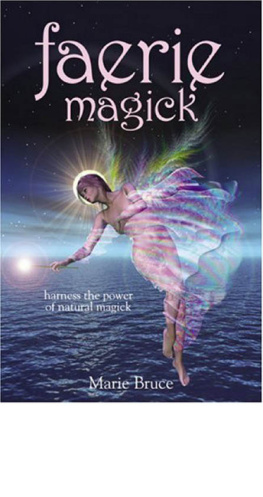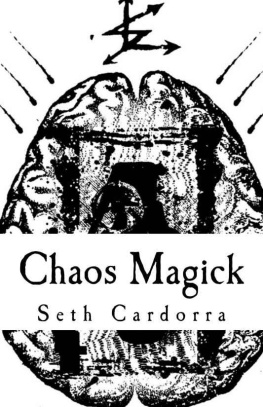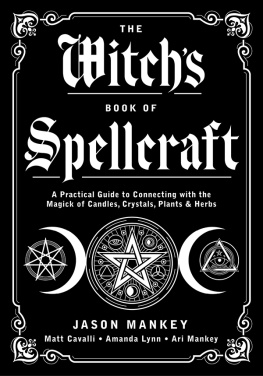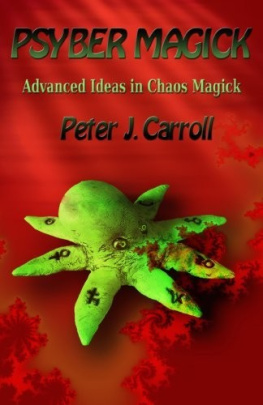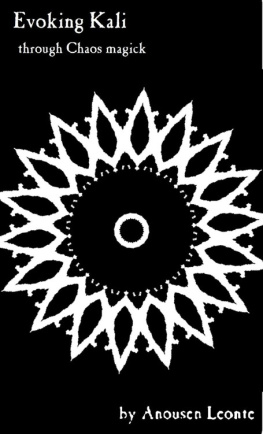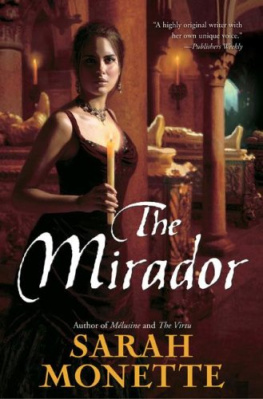Felix Flicker - The Magick of Matter: Crystals, Chaos and the Wizardry of Physics
Here you can read online Felix Flicker - The Magick of Matter: Crystals, Chaos and the Wizardry of Physics full text of the book (entire story) in english for free. Download pdf and epub, get meaning, cover and reviews about this ebook. year: 2022, publisher: Profile Books, genre: Religion. Description of the work, (preface) as well as reviews are available. Best literature library LitArk.com created for fans of good reading and offers a wide selection of genres:
Romance novel
Science fiction
Adventure
Detective
Science
History
Home and family
Prose
Art
Politics
Computer
Non-fiction
Religion
Business
Children
Humor
Choose a favorite category and find really read worthwhile books. Enjoy immersion in the world of imagination, feel the emotions of the characters or learn something new for yourself, make an fascinating discovery.

- Book:The Magick of Matter: Crystals, Chaos and the Wizardry of Physics
- Author:
- Publisher:Profile Books
- Genre:
- Year:2022
- Rating:4 / 5
- Favourites:Add to favourites
- Your mark:
- 80
- 1
- 2
- 3
- 4
- 5
The Magick of Matter: Crystals, Chaos and the Wizardry of Physics: summary, description and annotation
We offer to read an annotation, description, summary or preface (depends on what the author of the book "The Magick of Matter: Crystals, Chaos and the Wizardry of Physics" wrote himself). If you haven't found the necessary information about the book — write in the comments, we will try to find it.
Felix Flicker: author's other books
Who wrote The Magick of Matter: Crystals, Chaos and the Wizardry of Physics? Find out the surname, the name of the author of the book and a list of all author's works by series.
The Magick of Matter: Crystals, Chaos and the Wizardry of Physics — read online for free the complete book (whole text) full work
Below is the text of the book, divided by pages. System saving the place of the last page read, allows you to conveniently read the book "The Magick of Matter: Crystals, Chaos and the Wizardry of Physics" online for free, without having to search again every time where you left off. Put a bookmark, and you can go to the page where you finished reading at any time.
Font size:
Interval:
Bookmark:
There are many people I wish to thank, without whose help this book would either not exist or would exist in an unreadable form.
First, I wish to thank my agent Antony Topping for guiding me through the entire publishing process, and having an infectiously positive outlook at all times. I also wish to thank Marcus du Sautoy for putting us in touch.
The readability of the book is thanks to my editors Helen Conford, Ed Lake and Nick Humphrey at Profile, and Eamon Dolan at Simon & Schuster. Nick Allen at Forewords provided not only a thorough copy-edit, but also many helpful scientific comments.
I wish to thank Fritjof Capra both for inspiring me with his writing, then later encouraging me with my own.
I wish to thank Femi Fadugba and Eugenia Cheng for a great deal of help, support and advice on the writing and publishing process.
I wish to thank Ruth Gordon for allowing me to use her painting of Maxwells demon, and for creating the painting in the first place. I wish to thank my stationer and good friend Azeem Zakria of Scriptum in Oxford for crafting me a magic journal in which I could note down observations of everyday magic. I wish to thank Helena Laughton and Sixuan Chen for translating the passage in the Guiguzi; given that it is the first-known reference to magnets, a translation turned out to be surprisingly hard to come by.
I wish to thank all of my friends who took the time to read various drafts of the book and give helpful suggestions and comments. In particular, Dina Genkina, John Hannay, Kun Lee, Gwendoline Lindsay-Earley, Ellen Masters, Emma Powell, Leonid Tarasov and Jack Winter. The detailed comments of Holger Haas, Sebastin Montes Valencia and Jasper van Wezel led me to totally overhaul the first draft, and the book is incomparably improved as a result; Montes and Jasper provided additional sets of detailed comments on later drafts, and it was only after incorporating these that the book began to resemble something readable.
Finally, I wish to thank my fiance Beatrice Dominique Scarpa both for her profound help and for being a constant source of inspiration and magic, ever since that day we chanced upon one another while walking through the desert.
This appendix supplies a proof of a statement in . Recall the setup. You and two friends each face a separate night-washer in a separate tower (lets number the towers 1, 2 and 3). At midnight, each night-washer will receive a marble delivered by a raven; you and your friends will then have to guess which hand the night-washer has the marble hidden in, and they will each reveal whether you are correct. The washers have declared the following will always be obeyed:
- i. Whenever one of you picks the left hand, an odd number of you will be correct.
- ii. Whenever three of you pick the left hand, an even number of you will be correct.
This appendix will prove that there can be no secret rule being followed by the night-washers which is compatible with both i and ii; even if theyre cheating, they couldnt possibly obey i and ii unless they are somehow able to know what is happening far away, instantaneously.
Denote {A,B} the outcome for the {Left (L),Right (R)} hand. Each is either y for yes, theres a marble or n for no, theres not. Denote with . any outcome that could be either result.
In each case we will write a set of three brackets {L,R} {L,R} {L,R}, one bracket for the outcome in towers 1, 2 and 3 respectively. Looking at condition i, we need to consider the three cases where one person of your trio chooses left: either LRR (tower 1 choosing Left, towers 2 and 3 choosing Right), RLR, or RRL; and looking at condition ii we need to consider the case where all three of you choose left: LLL.
Take the first of these cases, LRR. The possible rules compatible with i are:
{y,.} {.,n} {.,n} (tower 1 correct under LRR)
{n,.} {.,y} {.,n} (tower 2 correct under LRR)
{n,.} {.,n} {.,y} (tower 3 correct under LRR)
{y,.} {.,y} {.,y} (towers 1, 2, 3 correct under LRR).
In each row, the person in tower 1 has chosen the left hand, and the other two have chosen the right, which is why the left entry in the first bracket is filled, and the right entry in each of the other brackets is filled. Condition i says that an odd number must be correct, so there must be an odd number of y entries along each row. The four rows exhaust the possible ways in which that is true; . appears for example in the right-hand rule for tower 1, as we have so far only considered the case where tower 1 chose left. This way, if the three of you choose to inspect hands LRR, an odd number of you must be correct, and condition i is obeyed.
But you could also choose RLR. Whatever the secret rule is, it must also be compatible with this choice, as the rule must cover all eventualities. This constrains the possible secret rules further. Consider the first row above. There are two ways to fill in some of the . entries so that this secret rule is also compatible with RLR. The two options are:
{y,y} {n,n} {.,n} (tower 1 correct under RLR) or
{y,n} {y,n} {.,n} (tower 2 correct under RLR).
Looking at the second of the four original rules, there are again two possibilities:
{n,y} {n,y} {.,n} (tower 1 correct under RLR) or
{n,n} {y,y} {.,n} (tower 2 correct under RLR).
Looking at the third of the four original rules, there are again two possibilities:
{n,n} {n,n} {.,y} (tower 3 correct under RLR) or
{n,y} {y,n} {.,y} (towers 1, 2, 3 correct under RLR).
And looking at the fourth of the four original rules, there are once again two possibilities:
{y,n} {n,y} {.,y} (tower 3 correct under RLR) or
{y,y} {y,y} {.,y} (towers 1, 2, 3 correct under RLR).
Finally, you could also choose RRL. Of the eight options just listed, the last place is now fixed in each case:
{y,y} {n,n} {n,n} (tower 1 correct under RRL)
{y,n} {y,n} {y,n} (tower 3 correct under RRL)
{n,y} {n,y} {y,n} (towers 1, 2, 3 correct under RRL)
{n,n} {y,y} {n,n} (tower 2 correct under RRL)
{n,n} {n,n} {y,y} (tower 3 correct under RRL)
{n,y} {y,n} {n,y} (tower 1 correct under RRL)
{y,n} {n,y} {n,y} (tower 2 correct under RRL) or
{y,y} {y,y} {y,y} (towers 1, 2, 3 correct under RRL).
The final rule in the list is that considered in the main text, everyone always correct. These eight rules are the only possible rules compatible with condition i, regardless of how they are encoded.
To check compatibility with ii, add up the number of ys in the left entries of each pair within a row. The number must be even for condition ii to be obeyed. But the number is always odd. Therefore there can be no secret rule compatible with i and ii, which is what we set out to show.

The wizard, Veryan, whispered into her crystal the familiar incantation as she clambered through the cold, dark cavern. With a puff of breath, as if to release the seeds of a dandelion, she awakened in the stone a dazzling red light which illuminated the moss-covered rocks around her.
After walking for some time, she found herself at an entrance. Her passage was barred by a vast wooden door held together with wide iron joists. Working in the harsh light of the crystal, she felt her way to the doors handle, a thick, black iron ring. She pulled, but the ring held: the door was locked. Finding the edge of the wood, she pressed her fingers into the small gap between the door and its surrounding and found the doors bolt, made of the same rough iron as the handle.
Font size:
Interval:
Bookmark:
Similar books «The Magick of Matter: Crystals, Chaos and the Wizardry of Physics»
Look at similar books to The Magick of Matter: Crystals, Chaos and the Wizardry of Physics. We have selected literature similar in name and meaning in the hope of providing readers with more options to find new, interesting, not yet read works.
Discussion, reviews of the book The Magick of Matter: Crystals, Chaos and the Wizardry of Physics and just readers' own opinions. Leave your comments, write what you think about the work, its meaning or the main characters. Specify what exactly you liked and what you didn't like, and why you think so.


